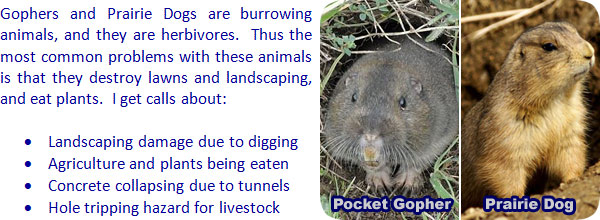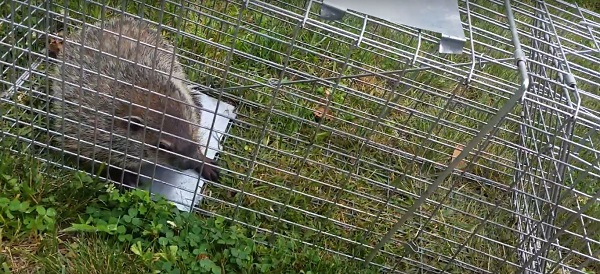 If you need gopher help, click on my Nationwide List of Gopher Removal Experts for a pro near you.
If you need gopher help, click on my Nationwide List of Gopher Removal Experts for a pro near you.
How to Kill a Gopher
The common gopher is not so commonly understood by most two-legged creatures walking above ground. As a result, gophers win their fair share of turf wars. Known as the “pocket” gopher (Thommomys) this critter is tough to control because it lives, works, eats, and breeds below ground away from the prying eyes of humanoids. As a result, some humans believe that sweet things like chewing gum and cocoa-flavored laxatives will poison a gopher. But science has prevailed in the labs of dedicated extension agents who’ve tested these “home remedies” and found that the net effects on gophers were on their preferred diets. The captive gophers developed a sugar habit!

The underground world of gophers demands a rigorous adherence to two tried and true methods for killing them. Poison and lethal traps are the only methods that work consistently to rid one’s land or yard space from these root-eating pests.
Humans misjudge gophers, because gophers live in tunnels, we humans assume the gopher is a captive adversary. That mistake only prolongs the suffering we will endure watching trees and shrubs wither and die, or continue to underperform. Lawns and pastures become streaked and crisscrossed with the gopher highways of upturned soil with gophers tunneling beneath the sod, ruining root beds and destroying pristine appearances of green grass and pasturelands.
Taking control of the gopher’s tunnel environment is eighty per cent of the solution to ridding your place of gopher tracks and destruction. You must learn and understand how a gopher uses the tunnels it makes, and when it is most likely to be actively moving about its tunnel network. Most importantly, you need to know when the gopher family is not moving and digging new tunnels.
Gophers are seasonal creatures. . The springtime is the most opportune time to act against your gopher enemies because that is when their numbers increase for the year; and, the gopher clans are moving about the tunnel system. In spring, the soil warms enough for them to move about freely. Wet, softer soil is better suited for digging and tunneling than in late fall and winter.. And after the long winter, gophers get hungry so they are ready to move out into their tunnel network to eat the roots that are exposed and regrowing into easy reaches throughout. Tunnels need to be expanded. More food can be to feed growing gopher clans.
Once you have identified the zone where tunnels are already established you can begin to affect gophers living eight to 16 inches beneath the Earth’s surface. That is where your garden shovel comes in handy. You can breach the tunnel system in multiple locations with the handle. Then drop strychnine into the feeding hole locations.
Some landowners “feed” poison into tunnels every day during spring time when the gophers are most active and numerous. Strychnine is produced out of naturally occurring organic substances occurring in plants. It has been tested in scientific trials to be the single most effective poison for gophers. Strychnine can begin to depopulate gopher grounds within 24 hours. It is 50 per cent effective and easy to insert into the gopher ecosystem.
The second favorite poison of choice for killing gophers is diphacinone. It is infused into grain and mixed with wax to make a dense block for depositing into the tunnel system. Diphacinone takes about 5-10 days to have full effect, but the gophers present at the time of the first feeding usually die off before eating all of the poisoned blocks. The leftovers are usually eaten by the replacement gophers that arrive to take over the tunnels. These bait blocks achieve a 70 per cent kill rate.
Effective trapping requires that you identify the main tunnel and open it with your shovel to expose the gopher’s line of travel nine to 18 inches deep and just over two inches wide. There are a number of trap designs from which to choose. The type of trap is not as important as how many you set in the main tunnel before covering them. Use a plywood board to shut off light over traps facing each other. Anchor the traps to prevent these from being carried off. Gophers will respond well to baited traps and die once the trapdoor shuts.